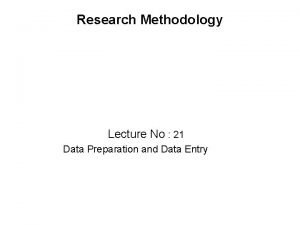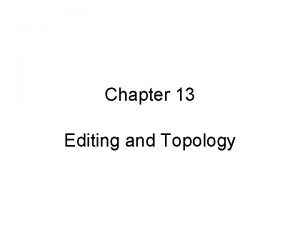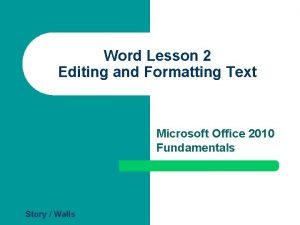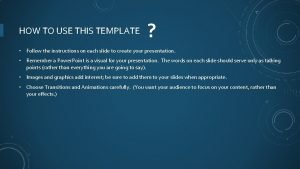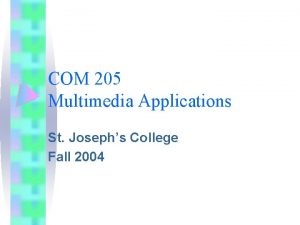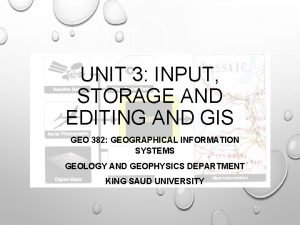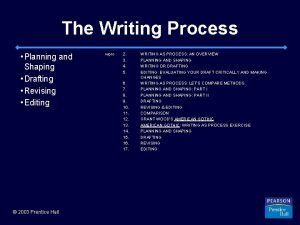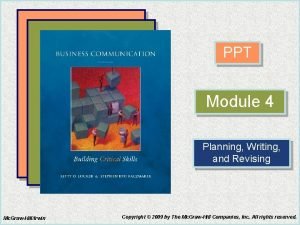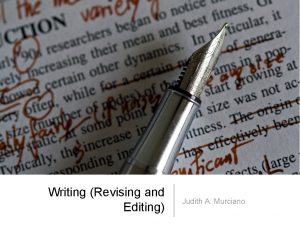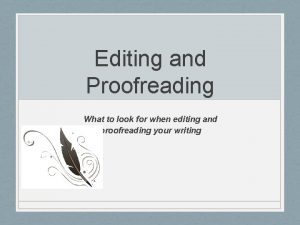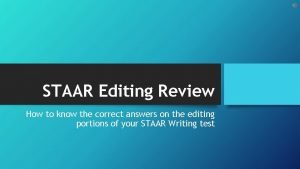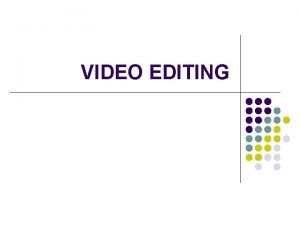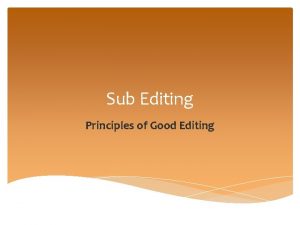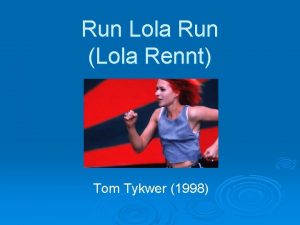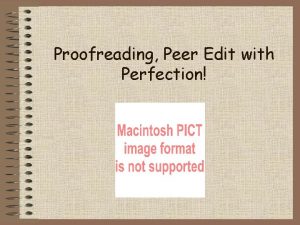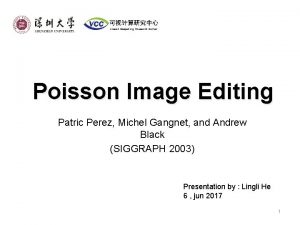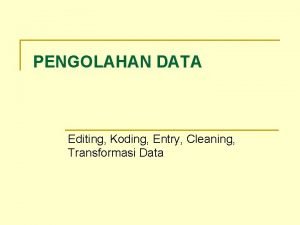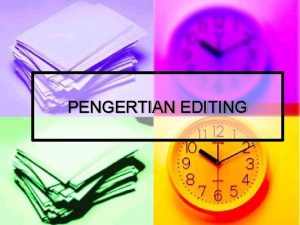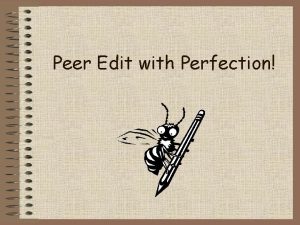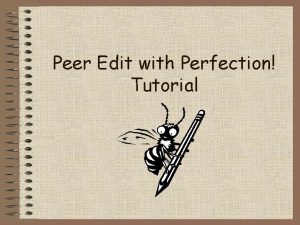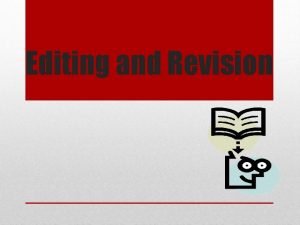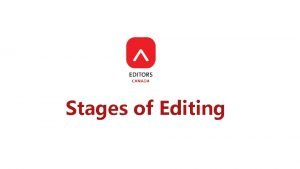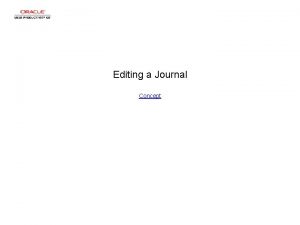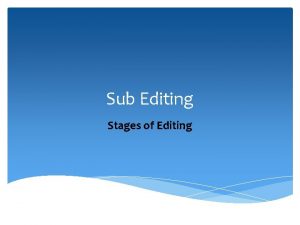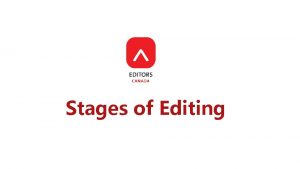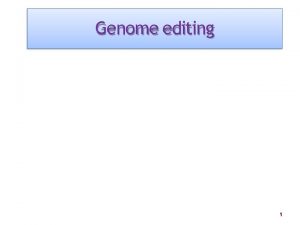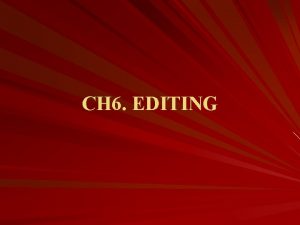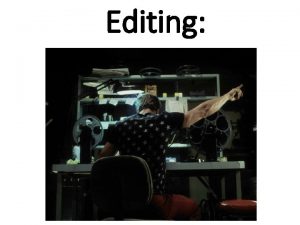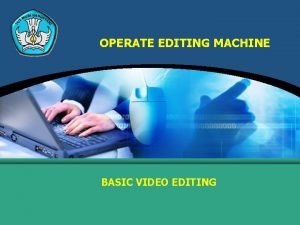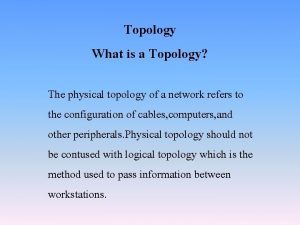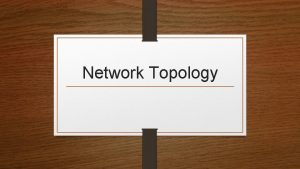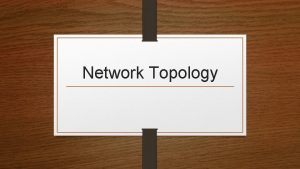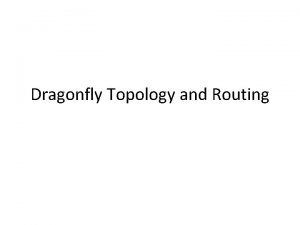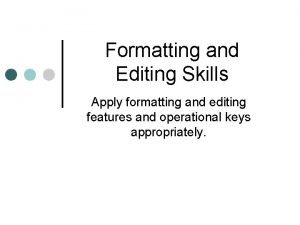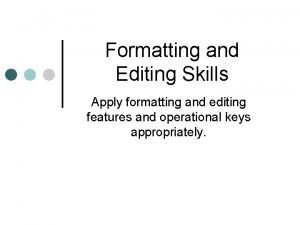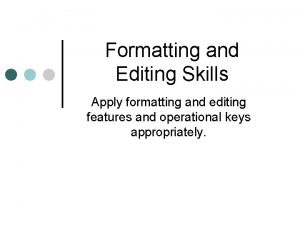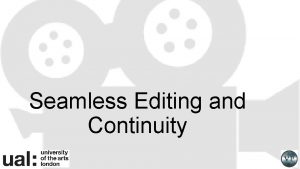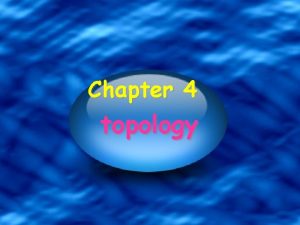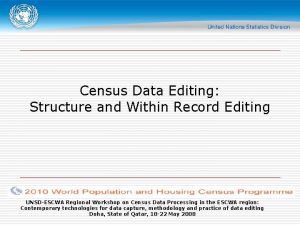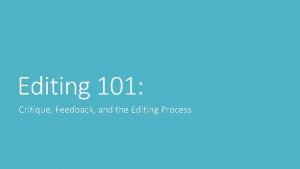Chapter 13 Editing and Topology Outline Topology rules
























- Slides: 24

Chapter 13 Editing and Topology

Outline • • Topology rules Complex polygon topology Combining and buffering feature Stream digitizing

Topology rules (1) Adjacent polygons must share a coincident boundary that is exactly the same for both. There are no gaps or overlaps between adjacent polygons. overlap gap

Topology rules (2) Lines should always end on other lines. Failure of two lines to meet is called a dangle. – Undershoots occur when one line is not quite long enough to meet the other. – Overshoots occur when one line crosses too far over the other. undershoot overshoot Dangles Correct topology

Topology rules (3) Lines that intersect should always each have a node (endpoint) at the intersection. Lines crossing without nodes are termed improper intersections. No node Improper intersection (2 lines) Node Proper intersection (4 lines)

Topology rules (4) Nodes should exist only where three or more lines intersect. A node where only two lines meet is called a pseudonode. Pseuodonode Correct topology

Topology rules (5) Lines or polygon boundaries should not cross over themselves and form loops. Loops Correct topology

Topology rules (6) There should not be duplicate copies of any points, lines, or polygons.

Topology problem severity • Undetectable – Errors don’t show up in maps and don’t impede analysis. • Minor annoyance – Errors show up when zoomed in or detract from maps. • Analysis stoppers – Errors prevent analysis functions from working correctly, such as stopping flow in a utility network. – Errors complicate spatial queries because relationships aren’t correct. • Legal issues and liabilities – Parcel boundaries overlap and ownership uncertain.

Exceptions • Sometimes topological “errors” reflect actual real-world situations • A dead-end street is necessarily a dangle. • All roads end at the boundary of the data set. • highway overpass does not actually intersect the interstate. • Such situations are termed exceptions and do not need to be fixed.

Logical consistency • The fundamental question of topology is how well the features mimic the relationships in the real world. – If they don’t reflect the real world and can be fixed, they should be. – If they do reflect the real world and/or are not avoidable, they are exceptions.

Maintaining logical consistency • Spaghetti models – – Spaghetti models don’t store topology. Includes shapefiles and geodatabase feature classes. No tools for testing logical consistency. Simple tools for creating consistent features • Snapping • Auto Complete Polygon tool / Cut Polygons tool • Map topology for editing shared nodes and edges – User takes complete responsibility for creating correct features while editing.

Maintaining logical consistency • Topological models – Store topology and allow setting of rules governing topology within and between layers. – Have tools for testing logical consistency and identifying errors – Advanced tools for correcting errors. – Users can fix errors generated by poor editing techniques. – Includes Arc. Info coverages and geodatabase feature datasets. – Requires Arc. Editor license. Examples of rules in a topology

Complex Polygon Topology Challenging digitizing Method 1. Divide and Conquer Start be creating the square outside boundary. Then use the Cut Polygons tool to carve out the rest. Method 2. Add Territory Use Create New for the first polygon 1, and Auto Complete for most of the others.

Challenging digitizing Close off and do 4, 6 separately; then merge. Do right after 7 b. Learn by experience not to get painted into a corner. Some common tricks are shown. Attach 3 to 2 before doing 5. Do after 8 b; use clip to remove overlap.

Combining and buffering features Merge features • Combines features and attributes. • Removes common boundary if adjacent. • Pieces may be adjacent or disjoint. Choose which feature is the target—its attributes will be assigned to the merged feature. Source feature attributes will be eliminated.

Union • Similar to merge • Creates a new feature, leaving originals unchanged • Attributes are ignored

Intersect • Find common area between features. • Creates a new feature • Attributes are ignored. The Intersect command must be added to the Editor menu using Customize.

Buffering • Buffer points lines or polygons. • Target layer determines output type (line or poly). • Specify distance in map units.

Stream digitizing • Usually, the user enters each vertex with a click of the cursor. • In stream digitizing, the program enters a point automatically every time the cursor moves a specified distance.

Point-to-point advantages • Provides the best control, especially with a mouse. – Not easy to smoothly follow a line with a mouse. – Less fixing of spurious vertices later. • More efficient data storage – Use fewer vertices on straight portions, more vertices on curves. – Best shape capture for fewest vertices.

Streaming advantages • Can be faster for data sets with many smooth curves – Unless you have to fix deviations. Deviations from source may need to be fixed using Modify Feature • Maintains consistent feature resolution. Tends to over-collect vertices and increase the size of the data files. Choice of stream tolerance is critical.

Stream tolerance • Prior to streaming, the user sets the minimum distance between vertices (stream tolerance). • As the cursor moves, a point is added when the distance is covered. • A tolerance that is too small collects too many vertices and enlarges the file. • A tolerance that is too large cannot adequately capture the features. 100 m 1000 m 1500 m

References • Price, M. (2013). Mastering Arc. GIS (6 th ed. ). Mc. Graw-Hill. Mastering Arc. GIS, 6/e Instructor Edition Chapter 13: Power. Point Notes and Figures
 Reviews data for consistencies.
Reviews data for consistencies. Nonlinear video editing
Nonlinear video editing Quote sandwich example
Quote sandwich example Topology rules
Topology rules Editing and formatting text
Editing and formatting text Template editing instructions and feedback
Template editing instructions and feedback Font editing and design tools in multimedia
Font editing and design tools in multimedia Spatial data input
Spatial data input Shaping and planning process
Shaping and planning process The writing process ppt
The writing process ppt Difference between digital and analog
Difference between digital and analog Revise and editing
Revise and editing What is proofreading
What is proofreading Staar revising and editing
Staar revising and editing Similarities of editing and revising
Similarities of editing and revising Investment decision rules
Investment decision rules Continuity editing
Continuity editing Who is sub editor
Who is sub editor Run lola run editing techniques
Run lola run editing techniques What is peer editing
What is peer editing Poisson image
Poisson image Pengolahan data editing, coding processing cleaning
Pengolahan data editing, coding processing cleaning Pengertian editing video
Pengertian editing video Peer-editing
Peer-editing Peer editing meaning
Peer editing meaning
